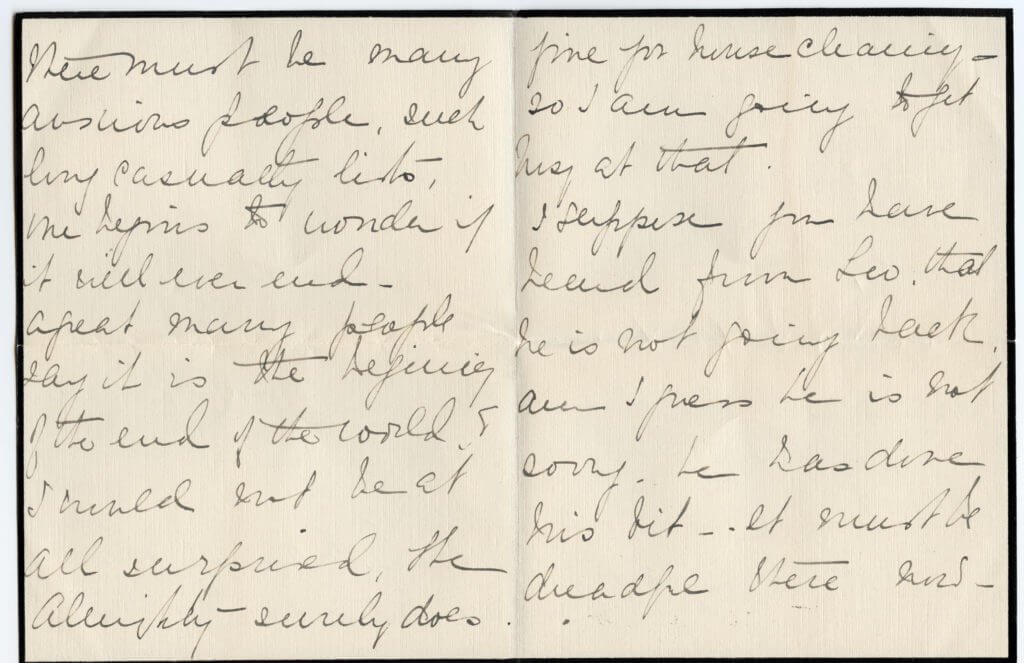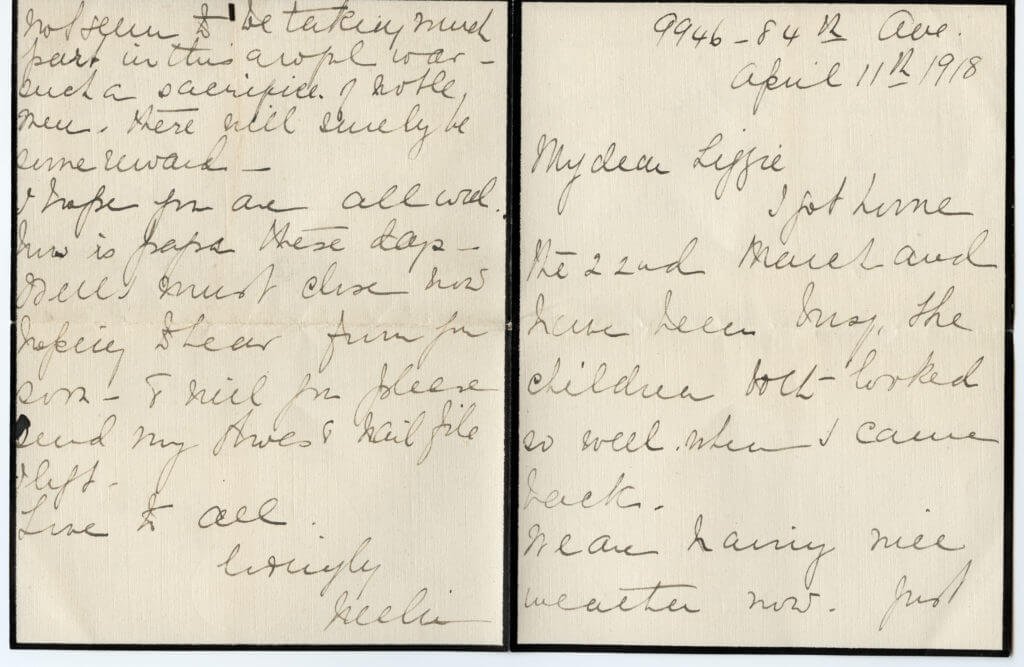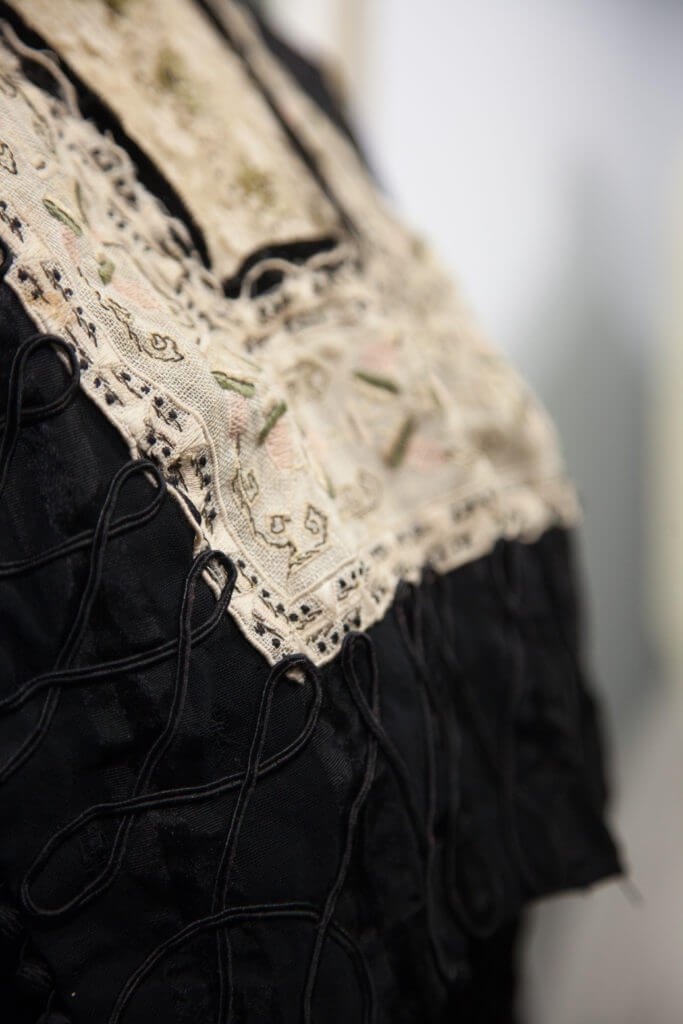
Introducing Elizabeth
Elizabeth “Lizzie” Tierney (1877 – 1929) married Cornelius O’Keefe in 1900. Despite a sizeable age gap—Cornelius was 40 years’ Elizabeth’s senior—they enjoyed a happy marriage. Cornelius doted on his young wife, leaving some historians to dismiss the young Elizabeth as nothing more than a “trophy.” However, to discount Elizabeth is to ignore her rich contribution to the community as a rancher, philanthropist, volunteer, wife, and mother. In fact, Elizabeth is representative of generations of women misunderstood or forgotten in early Canadian history.
Let us introduce you.
Meet Elizabeth
Elizabeth Teresa Tierney was born on October 12th, 1877 to James Tierney (1826-1901) and Elizabeth Burrows (1841-1921). Elizabeth was one of nine children—she had two sisters and six brothers. Elizabeth’s paternal grandparents, Denis Tierney and Judy Quinn, were both Irish immigrants to Canada. They arrived in Bytown (today Ottawa) ca. 1825, and soon established themselves as an affluent and wealthy family.
Her Story
As a child, Elizabeth attended the Congregation de Notre-Dame Roman Catholic school for girls. It was a five-storey stone building on Gloucestor Street in Ottawa, built in 1872—just five years before Elizabeth’s birth. The earliest of Elizabeth’s school scribblers stored in the O’Keefe Ranch archives dates to 1886, when she was just nine years old. From these documents, we know Elizabeth studied subjects like bookkeeping, social studies, ancient history, literature, grammar, arithmetic, geography and hygiene. Other books and documents indicate that she remained in formal education until (at least) the age of 17. During this time, Elizabeth became a talented painter. As an adult, Elizabeth was described as a pretty woman with auburn hair, who enjoyed fine clothes and art.
Elizabeth met her future husband—a widower named Cornelius O’Keefe—when her brother John was engaged to Cornelius’ daughter Helen. Cornelius was 40 years older than Elizabeth, though it’s useful to remember that her grandfather was 25 years older than her grandmother, and her father was similarly 15 years older than her mother. Elizabeth was only 23 when on January 8, 1900, she married Cornelius. They were married at St. Patrick’s Parish Church in Fallowfield, Ontario. According to the Vernon News, the newlyweds arrived in town on January 18, 1900.
It didn’t take long for Elizabeth to become integrated into the social fabric of the North Okanagan. On October 4, 1900, the Vernon News reported that she had won a prize in fancy work at the Vernon Fair for a tablecloth she had made. Early in 1902, she donated linens, curtains and blankets to the Vernon Jubilee Hospital maternity ward, and in March 1902 she was elected to the executive of the Vernon chapter of the Women’s National Council. Around O’Keefe Ranch, Elizabeth always insisted on a job well done—but she had a reputation for being hardworking was always willing to lend a hand.
Elizabeth and Cornelius O’Keefe helped raise funds for a new bell to be installed at St. James Catholic Church in Vernon. It was installed in June 1902, and named “Elizabeth,” for Elizabeth’s dedication to the project.
On June 25, 1901, Elizabeth and Cornelius welcomed their first baby, a son named Faber. Faber was followed by Margaret Mary (Peggy) on September 21, 1902, and Mary Elizabeth on February 15, 1904. The following March, Elizabeth continued her work in the community by joining the Vernon Jubilee Hospital Board of Directors. Her family continued to grow as well: Cornelius Jr. (Connie) was born October 31, 1905. 1908 brought tragedy to the O’Keefe family. On February 6, Elizabeth’s brother John Tierney died. This was followed on February 22, when Elizabeth’s 6-year-old son Faber died of spinal meningitis. Even 70 years later, Peggy and Mary O’Keefe vividly remembered the sadness and difficulty of witnessing Faber’s illness. In 1910, Cornelius’ eldest son Charles also died.
The year 1911 was a little kinder to the O’Keefe family—Elizabeth welcomed a son, whom she named Tierney. Elizabeth and Cornelius also advocated for a new Church and a Convent School to be built in Vernon. This would allow their children to receive the quality of religious and academic education they desired, but closer to home. The O’Keefes even offered a section of their land for this project, but it did not materialize. Their children were educated in schools in Kamloops and even Washington State.
Two years later, in 1913, Elizabeth’s sixth and final baby arrived—Eileen O’Keefe was born on July 8th.
The First World War impacted the O’Keefes just as it did for countless families across Canada. Three of Elizabeth’s stepsons served in the war, but only two of them survived. In March 1916, Frank O’Keefe died of pneumonia during training, and he was buried at O’Keefe Ranch. Oral histories state that Elizabeth helped to nurse victims of the 1918 influenza pandemic. Elizabeth also experienced the physical and mental decline of her husband during the war—she even took over operation of the Ranch. Cornelius O’Keefe died in 1919.
Elizabeth worked alongside foreman Jack Cousins to keep the Ranch running, and kept meticulous records of the Ranch’s finances. This wasn’t easy; the years leading up to the First World War saw an economic decline for farmers across Canada.
As a mother, a volunteer, a philanthropist, and, later, a rancher, Elizabeth left many of her artistic endeavours behind her. After Cornelius’ death, she began a modest art collection, attaining works by Canadian artists William Brymner and L.M. Kilpin. Elizabeth continued to oversee the education of her five surviving children. Many of her qualities became visible in them: Connie studied at the University of Toronto and acquired a large book collection; Peggy painted China and sketched with charcoal; Tierney tried his hand at several handicrafts, learning metalwork and even sewing; Eileen was talented in needlepoint and painting.
Elizabeth suffered from Brights disease (inflammation of the kidneys) and died in 1929 at the age of 52, having been nursed lovingly by her daughter Mary Elizabeth. Towards the end of her life, she commented that her health and appearance declined when she came West, but she never regretted it.









